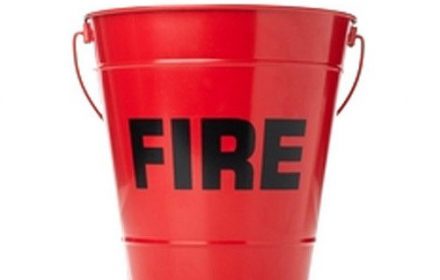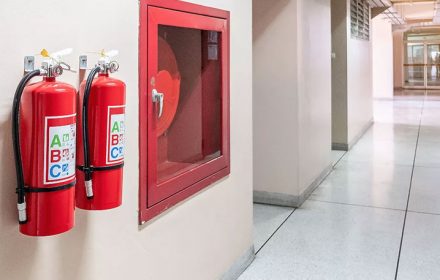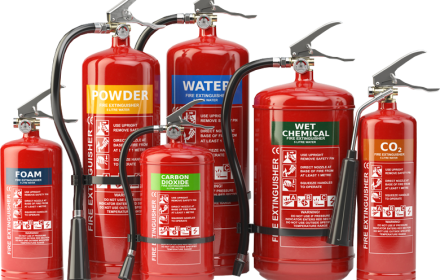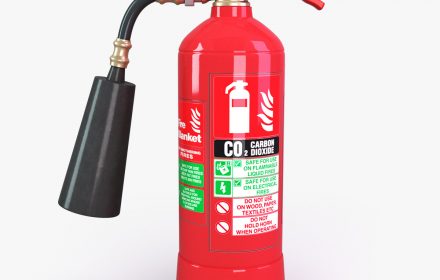FIRE PRECAUTIONS IN MOTOR VEHICLES
(Other than hazardous goods carriages)
The dangers of a motor vehicle fire are often overlooked. Motor vehicles are constructed with a variety of synthetic, flammable materials that burn and produce harmful gases. Diesel/Petrol/LPG/CNG and other flammable fluids are also present. When heated by fire some parts of the vehicle can explode, sending debris a great distance.
STATUTORY REQUIREMENTS
Central Motor Vehicles Rules, 1989
Rule 128(13)(iii) – Tourist vehicle to be equipped with fire extinguisher, dry powder type, located near the engine compartment.
Rule 128(12)(vi) – Wiring in passenger compartment of tourist vehicle to be carried in PVC sleeving / conduit causing. Wire passing through a sheet metallic hold to have rubber grommet to protect insulation.
COMMON CAUSES OF FIRE IN MOTOR VEHICLES
Smoking in the vehicle
* Using open flame while refueling or inspecting fuel tank Fuel dripping from fuel line/tank due to poor maintenance or collisions Damaged gaskets, exhaust pipe or muffler
* Damaged Wiring Accumulation of oil, grease & dirt on brake shoe and drum Overheated engine
FIRE SAFETY MEASURES
Discard smoking material & matches in ashtray only
Do not smoke or use open flame while refueling or inspecting fuel tank / battery
Check the fuel line for dripping gasoline
Repair/replace damaged gasket, exhaust pipe & muffler
Check wiring for cut / squeezed / flattened insulation
Avoid loose terminations and taped joints in the wiring
After positioning the vehicle for refueling, always turn off the engine, apply parking brakes and never start the vehicle unless the refueling is completed and fuel port is closed
Install a portable fire extinguisher (Dry powder, CO₂ or ABC Powder type) in the vehicle in a place easily seen and accessible, learn how to operate and maintain the same
Avoid parking and idling the engine where combustibles may come in contact with hot exhaust / muffler / catalytic converter
Ensure adequate clearance of goods (stowed on trucks / buses) from overhead electric lines to avoid arcing. [Maximum height of stowage: 3:8 m from ground as per CMV Rules, 1989]
IF THE VEHICLE IS CNG / LPG OPERATED
Hazards
LPG leaking from a vehicle may get ignited outside the vehicle and flash back to the vehicle.
LPG / CNG leak within the confined space of the vehicle may lead to fire and explosion
Weak gas cylinders may burst during refilling
Precautions
Check the gas system for leaks by using soap solution, and never by a naked flame
Do not use the vehicle if gas is leaking. Close the tank valve immediately.
monitor the condition of electrical system continuously
If LPG vehicles is parked for a prolonged period, thoroughly ventilate the parking room before starting the engine
If conversion of Petrol / Diesel engine to LPG/CNG is needed, have it done by authorized centre
WHAT TO DO IN CASE OF A VEHICLE FIRE
Get yourself and all others out of and away from the vehicle. If the vehicle is in a garage or other structure, exit immediately
Call the Fire Services, tell them the location of the vehicle
Do not attempt to get back into a burning vehicle to retrieve personal property in view of dangers from toxic smoke, flying debris and explosion
If you use a fire extinguisher, do so from a safe distance and always have a means to get away
Do not open the hood or trunk if you suspect a fire under it. Air could rush in, enlarging the fire, leading to injury
ADDITIONAL PRECAUTIONS
Do not carry extra Petrol / Diesel in glass bottles, jerry cans, drums and other
If conversion of Petrol / Diesel engine to LPG/CNG is needed, have it done by authorized centre
WHAT TO DO IN CASE OF A VEHICLE FIRE
Get yourself and all others out of and away from the vehicle. If the vehicle is in a garage or other structure, exit immediately
Call the Fire Services, tell them the location of the vehicle
Do not attempt to get back into a burning vehicle to retrieve personal property in view of dangers from toxic smoke, flying debris and explosion
If you use a fire extinguisher, do so from a safe distance and always have a means to get away
Do not open the hood or trunk if you suspect a fire under it. Air could rush in, enlarging the fire, leading to injury
ADDITIONAL PRECAUTIONS
Do not carry extra Petrol / Diesel in glass bottles, jerry cans, drums and other
CUSTOMER SAFETY AT PETROL PUMP
1. Switch off your engine
Turn off your vehicle engine when refueling and disable any other auxiliary sources of ignition to avoid the generation of sparks, which can ignite petrol/diesel vapors present in petrol pump.
2. Do not smoke
Do not smoke, light matches or lighters near where petrol is being handled or stored the minimum separation distance for such use should be 6 metres (20 ft) away from the fueling zone.
3. Don’t use your Cell Phone
Cellular phones and other electronic devices transmitting electromagnetic waves can ignite petrol vapors, therefore cell phones should be left inside the vehicle during refueling.
4. Do not get in and out of your vehicle while refueling
Prior to refueling of petrol/diesel, stay outside of the vehicle this will reduce the potential for any build-up of static electricity. The static electricity can be source of ignition for petrol/diesel vapors.
5. Care should be taken when refueling motorcycle
Ensure that your motorcycle is fueled slowly to prevent fuel from spilling and making contact with the hot engine which is very close to petrol tank. The heated engine can be source of ignition for fuel.
6. Loitering of children
Do not allow your passengers and children loitering on filling station.
7. Portable container
Incase you want to carry petrol or diesel:
Use only approved portable container.
During fuel filling, place the container on the ground.
Keep the fuel nozzle in contact with the container to avoid static electricity and fill slowly.
Do not over-fill the container. Leave 5% extra space to allow for expansion.
8. During refueling, do not open / repair bonnet of your vehicle.
9. If petrol is spilt on the forecourt while refueling of vehicle:
Inform the console operator Immediately;
Do not start your vehicle engine;
Do not wash the spill with water.
Source :-
i) The Petroleum Act, 1934
ii) National Fire Protection Association, National fire codes, 2006 edition, Volume I, Chapter 42, Refueling.
iii) National Fire Protection Association, National fire codes, 2006 edition, 30A Code for motor fuel dispensing facilities and repair garages, chapter 9.
iv) National Fire Protection Association, Fire Protection Handbook, 20th edition, Volume II, Section 21, chapter3, 21.36 & 21.38








